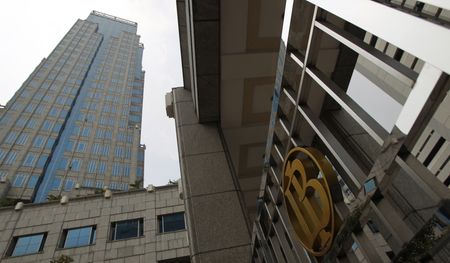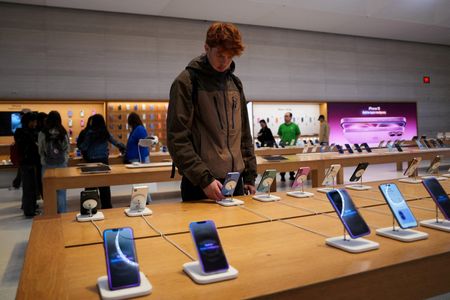By Gayatri Suroyo and Stefanno Sulaiman
JAKARTA (Reuters) – Indonesia’s central bank held its main interest rates steady on Wednesday, as expected by a narrow majority of analysts, to support the sliding rupiah, which hit a four-month low earlier in the day.
Bank Indonesia (BI) held the benchmark rate at 6.00%, as predicted by 17 of 31 economists polled by Reuters. The other 14 had expected a 25 basis-point rate cut.
The central bank also left the overnight deposit facility and lending facility rates steady at 5.25% and 6.75%.
“The focus of monetary policy is directed towards strengthening the rupiah’s stability against the impact of an increasingly uncertain global economy,” Governor Perry Warjiyo told a press conference.
A strong dollar has put the rupiah under pressure since October. It fell to four-month low of 16,120 a dollar earlier on Wednesday. It pared some of its losses to trade at 16,085 after BI announced its decision.
The central bank cut rates by 25 bps in September, just ahead of the start of the U.S. Federal Reserve’s rate-cutting cycle, but has held them steady since on concerns about the rupiah and uncertainty around the policies of Donald Trump’s incoming administration in the US.
Trump’s tariffs, combined with rising geopolitical tension, are expected to slow global growth next year and fuel inflation by disrupting supply chains, raising expectations that the Fed will delay rate cuts, Warjiyo said.
“The timing is not right yet,” the governor said when asked about BI’s own room for easing. He added that the bank would continue to monitor the situation. “Inflation is low and we want to push for economic growth,” he said.
Annual inflation was 1.55% in November, near the bottom of BI’s 1.5% to 3.5% target range, having eased significantly since early 2023. Annual economic growth was 4.95% in the third quarter, the slowest in a year.
Meanwhile, to stabilise the rupiah, BI has conducted bigger market interventions, offered debt with attractive yields to encourage capital inflows, and bought more government bonds in the secondary market this quarter, Warjiyo said.
“It seems that the US economy will remain strong in 2025, which may keep (the) USD strong in 2025. That’s why IDR’s stability will be in peril even in 1H 2025, giving fewer chances for Bank Indonesia to deliver cuts,” said Ryota Abe, an economist at SMBC in Singapore.
(Reporting by Gayatri Suroyo, Stefanno Sulaiman, Fransiska Nangoy and Ananda Teresia; Editing by John Mair and Kate Mayberry)











